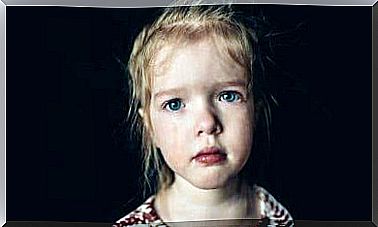Treatment For Borderline Personality Disorder

There is a treatment for borderline personality disorder. The main characteristic of this condition is a repertoire of non-adaptive behaviors in situations that generate frustration and discomfort. The maladaptive behavior is associated with excessive expectations that become uncomfortable when they are not met.
Dichotomous thinking is common in people with this disorder and conditions their relationship and perception of the world. In the same way, it explains their rigid behavior and limits their emotional, professional and social sphere.
It is true that emotionally stable people can react inappropriately in a situation that generates discomfort. The difference between people with optimal emotional stability and people with borderline personality disorder is that the former usually know how far they can “get carried away” by emotions. The reactivity to the discomfort is usually greater in the latter, and they tend to be risky types of behavior.

Borderline personality disorder
This disorder falls into the category of cluster B of personality disorders in the DSM-5. The main characteristic is a pattern of emotional instability that manifests itself in interpersonal relationships, self-image and emotions.
Impulsivity is another key trait, and it manifests itself in full emotional escalation in the face of unpleasant events. In the worst case, impulsivity can lead to risky behaviors such as self-harm or aggression.
What can sum up the function of people with borderline personality disorder in general is that emotional escalation is usually quite high in situations that generate unpleasant emotions. This escalation involves high reactivity to the surroundings, and the return to the baseline is slower than usual.
Treatment for borderline personality disorder
This is often associated with eating disorders, addiction and other disorders of impulse control. Therefore , psychological therapy is necessary and important throughout the treatment of borderline personality disorder.
The non-adaptive behavior associated with borderline personality disorder is effective in the short term for relieving discomfort, but not in the long term. In this regard, medication can complement any form of psychotherapy for it, and associated disorders sometimes require hospitalization or specific treatment.
Continue reading to discover two treatments for borderline personality disorder.
Dialectical behavioral therapy for borderline personality disorder
Dialectical behavior therapy was developed by Dr. Marsha Linehan. Furthermore , it links behavioral and acceptance strategies as well as changes through the dialectical model.
Thus, dialectics is part of the therapeutic program to exaggerate absolutist conclusions of dichotomous thinking. It promotes acceptance of discomfort and changes in certain dysfunctional behavior patterns.
How to use this treatment
Standard dialectical behavioral therapy for borderline personality disorder is comprehensive and includes four treatment modes:
- Individual therapy. This is the basic format. A therapist is responsible for conducting individual sessions of 50-60 minutes once a week.
- Skills training. This corresponds to the modality of group therapy and individual therapy. The therapist must be trained in borderline personality disorder and mindfulness skills, emotional regulation, tolerance for discomfort and interpersonal effectiveness. A session lasts 2-3 hours and takes place once a week.
- Generalization of activities. This is about helping a patient integrate the learned skills into their natural context. They do this by calling between sessions to translate their skills into real-life situations.
- Consultation team. This is a form of burnout prevention for therapists. There are weekly tutoring sessions where the entire team is present.
In addition , the patient undertakes to participate in therapy for an estimated time (usually between six months and one year) before entering the treatment program. Failure to attend four sessions in a row is usually the basis for termination of treatment until the contract expires when they can renegotiate starting therapy.

Iconic therapy
This type of therapy originated in the Centro Asistencial San Juan De Dios. This therapy is an integrated model that includes an explanatory guide to the lack of emotional regulation. It is a therapeutic model that brings together the different strategies to be used when working with non-adaptive behaviors and aspects of vulnerability that increase the risk of the unstable.
Characteristics of iconic therapy and its application
In short, iconic therapy is based on the treatment of borderline personality disorder through the use of icons. Furthermore, these icons are a way of verbalizing certain aspects of non-adaptive behavior in a non-judgmental way. In the same way , they encourage insight and allow for skill training such as frustration tolerance. It also promotes acceptance strategies. In addition, it works on other aspects such as the feeling of emptiness, personal identity and self-esteem.
Thus, iconic therapy consists of 32 icons, and a given individual can place them on a kind of map that allows them to move from the negative emotion to the most useful coping strategy. In addition, this coping strategy is represented by an icon. Finally, this type of therapy lasts for about 12 weeks and is carried out in group, individual and family meetings once a week.









